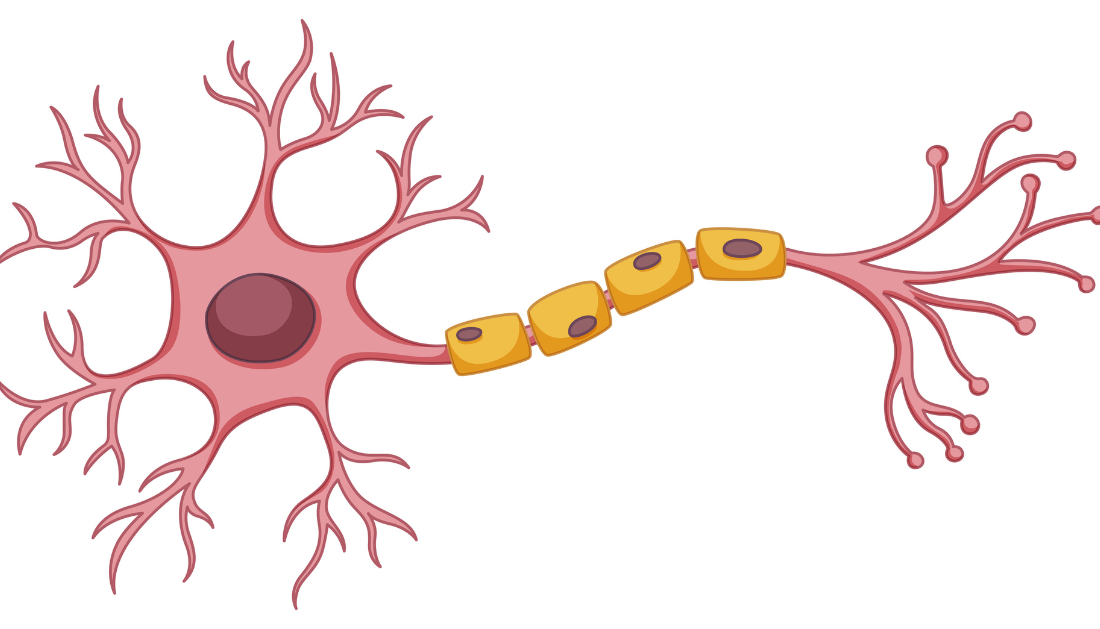

Researchers looked at how oligodendroglial lipid metabolism in the central nervous system maintains an energy reserve for axonal function and myelin homeostasis under glucose deprivation in a recent study that was published in Nature Neuroscience.
Context
In vertebrates, oligodendrocytes generate myelin to support saltatory conduction and supply lactate or pyruvate, which are metabolic substrates that aid in the production of axonal Adenosine triphosphate (ATP). When myelin restricts axonal access to extracellular nutrients, this assistance is critical.
Additionally, oligodendrocytes use fatty acids (FAs) for energy or synthesis through fatty acid (FA) β-oxidation in mitochondria and peroxisomes. Decreased glucose levels impact myelin turnover and FA metabolism, which leads to anomalies in white matter in neurodegenerative disorders.
To better understand how oligodendroglial FA metabolism, particularly in the context of neurodegeneration, promotes myelin preservation and axonal function under various metabolic situations, more study is required.
About the Study
A popular inbred strain of laboratory mice, C57 Black 6 (C57BL/6) served as the breeding background for all the animals utilized in this work, with the exception of Aldehyde Dehydrogenase 1 Family Member L1 – Green Fluorescent Protein (Aldh1l1-GFP) mice.
They were kept in a typical setting with a 12-hour day/night cycle, unrestricted access to food and drink, and a temperature maintained between 30 and 70 percent.
Transgenic mice were produced in-house using established procedures. An autophagy research tandem fluorescent construct called Monomeric Tag Red Fluorescent Protein – Monomeric Wasabi Green Fluorescent Protein – Microtubule-associated protein 1A/1B-light chain 3 (mTagRFP-mWasabi-LC3) was expressed under the 2′,3′-Cyclic Nucleotide 3′-Phosphodiesterase (Cnp), an enzyme expressed in oligodendrocytes, in order to visualize autophagosomes in oligodendrocytes.
Using particular primers and a polymerase chain reaction (PCR) program, genotyping was done. As previously mentioned, eight additional mice lines were additionally genotyped to target different cell types and pathways, including oligodendrocyte precursor cells, astrocytes, microglia, and oligodendrocytes.
In a number of studies, homozygous mutants were compared to control genotypes to evaluate the function of genes.
Unless specified otherwise, Merck was the source of the reagents. Specific ingredients, such as glucose and sucrose, were used in the artificial cerebrospinal fluid (aCSF) solution used for electrophysiological recordings and optic nerve incubation in order to maintain osmolarity.
Different inhibitors of the autophagy and metabolic pathways were made fresh and added to the aCSF at different doses.
Mice’s optic nerves were prepared by dislocating their cervical vertebrae, then they were dissected and cultured in aCSF at 37°C. The study included electrophysiological recordings and survival analysis to assess cellular and axonal responses in various metabolic scenarios. Software like Fiji and Imaris were used for data analysis, and GraphPad Prism 9 or Excel were used for statistical analysis.
Study findings
In this study, under glucose deprivation conditions, completely myelinated optic neurons from 2-month-old transgenic mice expressing fluorescent proteins in oligodendrocytes or astrocytes were examined. At 37°C, optic nerves were cultured in CSF with different concentrations of glucose (10 mM, 0 mM, or low glucose).
Fluorescence analysis was utilized to evaluate cell survival over a 24-hour period. Remarkably, whereas over 70% of astrocytes had perished, the bulk of oligodendrocytes were still functional even in the absence of glucose.
Microglia and oligodendrocyte precursor cells (OPCs) were unaffected as well. These findings suggest that oligodendrocytes, possibly through FA metabolism, depend on an energy store that exists beforehand.
All cells in optic nerves survived for at least 24 hours when they were treated with one milligram of glucose—a quantity too low for axonal conduction.
Furthermore, giving 3-hydroxybutyrate as a substitute energy source avoided cell death, indicating that energy metabolism—rather than only glucose restriction—was in charge of preserving cell viability.
Reactive oxygen species (ROS) inhibitors did not improve cell survival, suggesting that ROS production was not the reason for cell death. All cell types were found to have substantial cell death in the presence of severe hypoxia and glucose deprivation.
In order to explore the possibility of FAs functioning as an energy reserve, nerves were subjected to 4-bromocrotonic acid (4-Br), an inhibitor of mitochondrial FA β-oxidation, while they were not given glucose.
This led to a considerable decrease in cell viability, confirming the theory that energy production is sustained by FA metabolism through β-oxidation. It is noteworthy that thioridazine, which inhibits peroxisomal β-oxidation, had no effect on cell survival. This implies that mitochondrial β-oxidation serves as a substitute for peroxisomal activity.
Energy deprivation caused structural alterations in the myelin sheath, including elevated g-ratios and vesicular demyelination, which electron microscopy demonstrated were likely caused by autophagic myelin breakdown.
Changes in FA metabolism were validated by proteomic analysis, which showed an increase in the enzymes responsible for both FA and ketone body metabolism. Additionally, the study found that oligodendrocytes starved of glucose produced more autophagosomes, suggesting that autophagy is elevated at a basic level.
Last but not least, oligodendrocytes’ β-oxidation was inhibited by pharmacological or genetic means, which reduced axonal activity and showed that FA metabolism maintains axonal conduction in low-glucose environments.
In conclusion
In summary, the integration of both in vitro and in vivo evidence points to an expanded model of myelin dynamics in which oligodendrocytes sustain axonal activity by metabolizing FAs in addition to glycolysis.
The main experiment in the study used metabolic inhibitors to measure ATP levels and axonal conductivity in myelinated optic neurons under low glucose circumstances. These studies demonstrated that oligodendrocytes with decreased glucose availability gradually lose myelin.
The study also discovered that although FA metabolism helps axon function, glucose cannot be entirely compensated for by it. Therefore, during metabolic stress, oligodendroglial FA metabolism aids in preventing axon degeneration.
For more information: Oligodendroglial fatty acid metabolism as a central nervous system energy reserve, Nature Neuroscience, https://doi.org/10.1038/s41593-024-01749-6
more recommended stories
 Fat-Regulating Enzyme Offers New Target for Obesity
Fat-Regulating Enzyme Offers New Target for ObesityKey Highlights (Quick Summary) Researchers identified.
 Spatial Computing Explains How Brain Organizes Cognition
Spatial Computing Explains How Brain Organizes CognitionKey Takeaways (Quick Summary) MIT researchers.
 Gestational Diabetes Risk Identified by Blood Metabolites
Gestational Diabetes Risk Identified by Blood MetabolitesKey Takeaways (Quick Summary for Clinicians).
 Phage Therapy Study Reveals RNA-Based Infection Control
Phage Therapy Study Reveals RNA-Based Infection ControlKey Takeaways (Quick Summary) Researchers uncovered.
 Pelvic Floor Disorders: Treatable Yet Often Ignored
Pelvic Floor Disorders: Treatable Yet Often IgnoredKey Takeaways (Quick Summary) Pelvic floor.
 Urine-Based microRNA Aging Clock Predicts Biological Age
Urine-Based microRNA Aging Clock Predicts Biological AgeKey Takeaways (Quick Summary) Researchers developed.
 Circadian Control of Neutrophils in Myocardial Infarction
Circadian Control of Neutrophils in Myocardial InfarctionKey Takeaways for HCPs Neutrophil activity.
 E-Cigarette Use and Heart Attack Risk in Former Smokers
E-Cigarette Use and Heart Attack Risk in Former SmokersKey Takeaways for Clinicians and Nurses.
 36-Week Pre-eclampsia Screening May Reduce Term Risk
36-Week Pre-eclampsia Screening May Reduce Term RiskA New Preventive Strategy for Term.
 Cardiovascular Risk and Sudden Cardiac Death in Diabetes
Cardiovascular Risk and Sudden Cardiac Death in DiabetesRising Sudden Cardiac Death (SCD) Risk.

Leave a Comment